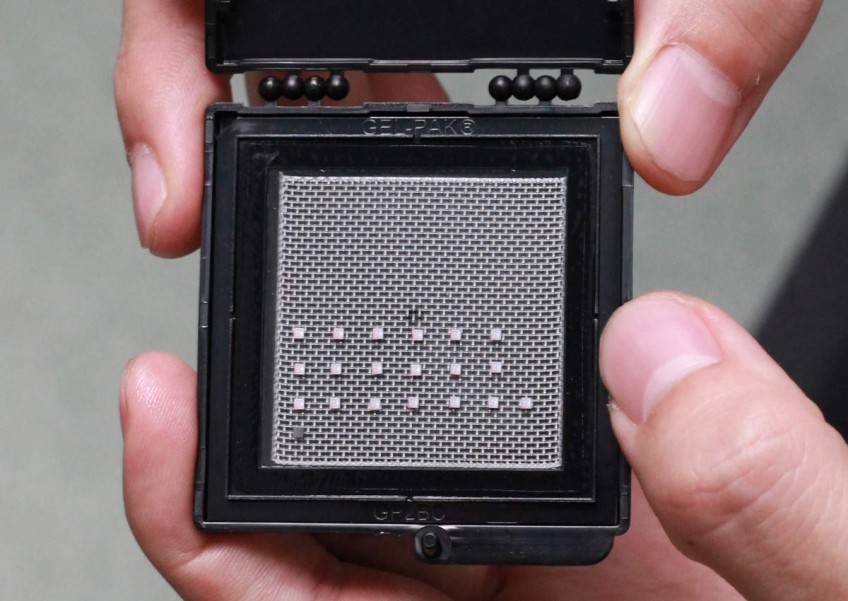NTU chip may be music to audiophiles' ears

Music from smartphones that sounds like it is coming from high-end stereos; wireless headphones with a longer battery life - all these are being made possible through a pinhead-size chip designed by local engineers.
The microchip is also more efficient and cheaper to make than existing ones on the market.
A team led by Joseph Chang from Nanyang Technological University (NTU) invented the ultra-high-quality chip, which can tolerate a lot more "noise" from other components in a device, such as microprocessors or 4G antennas. Such noise, usually heard as crackles and hisses, can cause sounds to be muffled.
"With less distortion, the output is better and the sound is cleaner," said Associate Professor Chang, who is from NTU's School of Electrical and Electronic Engineering.
The team includes research scientists Ge Tong and Guo Linfei. Their design for the chip is based on mathematical formulas. "Every electronic device has limitations, or errors. We fixed some of these with simple electronics based on complex mathematics," explained Prof Chang.
Even though the sound quality in smartphones is already good, consumers expect better, he said, adding that the market is always greedy for smaller and cheaper chips.
"High-quality chips are already around, but they are large and expensive," he said. His 30 patents include one for a device that helps people who use hearing aids to hear better when they are on the phone.
NTU has emerged as a leader in semiconductor research, according to media and information firm Thomson Reuters. The university was ranked seventh worldwide in the field, in Thomson's 2015 State of Innovation report.
With the new chip, which is 20 per cent smaller than ones commonly found in electronic devices now, a manufacturer producing 300 million pieces a year could save US$3 million (S$4.1 million), Prof Chang estimated.
Engineers The Straits Times spoke to said the NTU chip would help reduce power consumption.
Said Lau Kim Hang, a senior manager of Ngee Ann Polytechnic's diploma programme in audio-visual technology: "The chip's potential is in its power-saving ability, as it is smaller and more efficient."
He added: "Power consumption is very important for mobile devices because it drains the battery and affects usage.
"It's always been the aim of chip manufacturers to come up with good, cheap and smaller converters at a lower cost."
With the wealth of applications that the chip could be used in, many are eager to get their hands on it. The team is in talks with at least five chip firms to license the product. It has also filed seven patents and published more than 10 papers in academic journals.
The chip could soon be used in products such as audio amplifiers, car audio systems and TV sets. It is also being tested in radiation chambers at a space components company in the United States, for possible use in satellites.
The team is working with the Massachusetts Institute of Technology in the US on extending the battery life of 4G smartphones.
It has also teamed up with a local gaming firm to look into using the chip in wireless headphones, which could give a gamer 30 hours of non-stop play, up from 20 hours with current sets.
Said Prof Chang: "This chip is for the future - it gives ultra-high-quality audio at a lower cost with greater clarity in sound. Once you hear the difference in sound quality, you won't want an inferior product."
ateng@sph.com.sg

Get MyPaper for more stories.